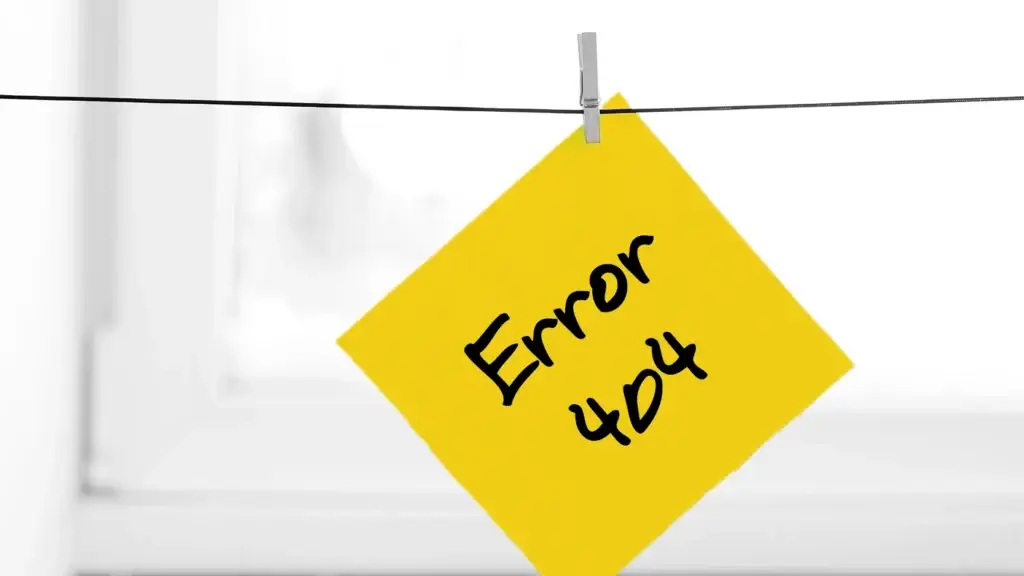Robust data governance is the data end user’s dream, because good data governance makes sure data is accurate, up-to-date, and actionable. Companies who adopt data governance understand this key idea:
The cost of ineffective data governance is much higher than the cost of successfully governing data.
But a persistent problem with data governance programs is that they are reactive instead of proactive. Instead of correcting bad data collection early in the lifecycle of data, companies just try to put out fires and clean up messes at the end of the data pipeline.
The result? Burnt, soggy data.
The better way is to address data quality issues before they become a serious issue—what we call proactive data governance.
There are a variety of best practices and technology solutions out there to help companies accomplish proactive data governance. Each solution meets a different need. The information in this packet comes from our understanding of how to implement a tag auditing solution in multiple environments, though the principles are very similar for any solution.
In the end, companies who adopt data governance in early development environments are better able to detect and prevent errors in their websites and apps before moving into production. That way they don’t have to constantly put out fires in production.
Table of Contents:
- Make Data Governance Your Business
- Building Relationships Across Teams
- Identifying Challenges
- Overcoming Challenges
- Catch Errors Before They Happen
Make Data Governance Your Business: Understanding the Playing Field
Data governance is crucial always and everywhere, and the earlier in development a company properly applies data governance technology, the less costly and risky the implementation.
At some point, you’ll need to start the conversation with other teams. As you begin to reach out to other stakeholders in your organization, the following sections of this packet can provide more tips on how to:
- Find the right people to make data governance your business
- Begin the conversation about proactive data governance
- Present a business case for proactive data governance to decision-makers
Building Relationships Across Teams
Finding the Right People
As your company’s data governance champion, you will want, and need, the technical people in your org on your team.
They’re going to have answers for you when you’re not sure how to proceed, and will give the final say when it comes to adopting proactive data governance.
Answering the following questions will give you a head start in finding the right people to work with, understanding who does what and how they do it:
- Who is in charge of your staging/pre-production environments?
- Who is responsible for data governance?
- Do you have data governance/management personnel?
- How many teams are there?
- Who works there and what makes them tick?
Understanding the organizational structure of your company’s technology teams can help you approach the right people to discuss data governance for pre-production environments.
Understanding Your IT Structure
No two IT structures will be the same. Become familiar with the technology arm of your organization and learn the business functions, goals and responsibilities of each type of team.
As you review the IT department structure of your organization, identify individuals you can reach out to and ask them to point you in the direction of those who manage your pre-production environments.
The following are common functions that may be housed in an IT department. Those most likely to influence data governance initiatives or manage pre-production environments are:
- Software Design & Development
- Software Testers
- Infrastructure Management
- Database Administration
- System Administration
- Training
- Data Governance
- Information Security
- Project Management
- Operations
- Business Analysis
- Development Operations
- Quality Assurance
- Web Development
- Technical Support
Each of these functions may belong to team units that are cross-integrated or siloed uniquely across every individual company. You may need to work with individuals on one team or many teams. Begin to build the relationships you need for your proactive data governance culture by having conversations with these people.
Starting a Conversation
Almost every change to a website or app will happen in a development environment (or multiple environments) before it comes to a public page.
Knowing some common terminology can help you begin progressing the conversation about establishing proactive data governance across pre-production environments.
Speak their language
Local environment – Large apps or websites are often built in multiple pieces on multiple machines before being pushed to a development server.
Development/sandbox environment – In a development environment, interfaces are rudimentary and the main focus is on functionality. This is where the developer performs unit testing.
Integration environment – This environment is where changes to a software get merged (integrated) with the software.
Test/quality assurance environment – The testing environment is a prototype of production, giving quality assurance personnel a chance to interact with the interface and ensure both front-end and back-end performance.
Staging/pre-production environment – Staging is a version of a website or app that is meant to represent the final product as closely as possible for final testing. The staging environment may be linked to the same databases as the production environment.
Production environment – The production environment is the client-facing website or app. It is the “finished” product.
Ask to Collaborate
As you reach out to your IT counterparts, remember that you are speaking to highly technical personalities, who face pressure from multiple business stakeholders who often do not understand the nuance of what these tech teams do.
These individuals are focused on providing continuous delivery while maintaining quality.
Your proactive data governance proposal will make a lot of sense to these professionals, but you need to ask for their help in a way that respects their time, expertise, autonomy and ownership of the development environments.
ObservePoint data governance consultants asked a panel of IT engineers, QA experts and DevOps gurus for advice on the most effective way to open conversations with IT-type personalities.
They shared the following insights into speaking IT:
Respect our time
“Tell us directly what you are trying to accomplish and why. Skip any small talk and jump directly to what your problem is.”
Define the objective/problem
“We need to understand your business goal. If you are just telling me you have a new ‘best’ practice process to install I need more information. Best could mean ‘fastest,’ ‘cheapest,’ ‘lowest risk,’ ‘lowest maintenance,’ ‘best crafted,’ ‘most unique,’ or a bunch of other things.”
Come to us
“Send an email or walk over to our area. Don’t call a meeting in a different space, especially without giving us any context.”
It comes down to ownership
“We want to understand where the problem rolls up to. If it is your problem, are you coming to us for advice? If it is our team’s problem, what work is needed? If it doesn’t fall into our area of ownership, we aren’t likely to help.”
Be quick to ask questions,
and slow to offer solutions.
“In IT we generally want to know what you want done, but we don’t want you to tell us how to do it. In the IT world there is always more than one way to solve a problem, and we need to understand all of the business context before we agree to a suggested solution. Let us explore the solution space and then lead the analysis of its value.”
Closure
“We don’t like loose ends and we like process. Define what the next steps are. End any discussion by agreeing to who needs to do what, and by when.”
Sample Emails to IT/Expert Team
Here is a sample email you could initially send to an IT expert in your company to find the right point of contact:
To {person’s email}
Subject Line: Do you know?
Hi {person’s name},
I am trying to find the person who manages the [release cycles on our staging environments], is this you? If not, can you point me in the right direction?
Thanks for helping me out,
{your name}
Here is a sample email you could initially send to an IT expert in your company to begin exploring the idea of, for example, testing tag implementations in pre-production environments:
To {person’s email}
Subject Line: Testing possibilities?
Hi {person’s name},
I am looking into ways to keep tagging implementations more consistent from pre-production to live environments.
Does your team have a process in place to check the presence and performance of analytics and marketing tags in pre-production and staging release cycles? If so, can you tell me what that process looks like?
Thanks,
{your name}
Here is a sample follow-up email you could send once you understand more about your IT team’s release cycle process and would like to suggest a solution:
To {person’s email}
Subject Line: This solution could benefit you
Hi {person’s name},
Thanks for answering my questions. I’m wondering if it might make sense for you to take a look at a solution we’ve been using to monitor implementations on the www site and apply the same tool in pre-production?
If we could catch any implementation errors before they went live we could be more proactive than reactive, save time and money, etc.
Do you have 15-20 minutes to sit down and talk? Is your calendar up to date?
Thanks,
{your name}
You could also opt for one longer email that captures all of these points if you are confident you know the right person to talk to initially:
To {person’s email}
Subject Line: Tagging possibilities?
Hi {person’s name},
I am part of the {your team’s name} team. We use a number of various tags to help keep track and report on our website’s analytics.
I know your team controls the site code before it goes to production and tests it in a staging environment for quality control. I’m interested in the quality control process because scanning the presence of those tags in pre-production would save us from coming back to you if we make a tagging mistake that gets released to prod.
We’ve been using a software platform called {solution} to continually monitor our site, to test campaigns and conversion flows and to report where we might have tagging issues and data leakage.
I think we could use {solution} on your staging environment to ensure any adverse changes made to our implementation don’t go into production. And I’m curious about what you think of this idea.
Could we set up a brief meeting to discuss what is needed to gain access to these controlled environments and what it would take, or if it is even a good idea, to allow {solution} the ability to access the site to scan our web pages and ensure our tags are implemented as expected?
I have some documentation of the static IPs {solution} can use to connect to our site. Since you’re the expert, I’d love to hear your thoughts on all this.
Thanks,
{your name}
Identifying Challenges
Even after you’ve found the right people in your organization to work with and have buy-in from those stakeholders, you may still face organizational and technical challenges to get your proactive data governance initiative over the line.
Technical Challenges
As you work with development teams, there will be technical barriers to implementing your initiatives into the lower development environments. Most of these barriers are necessary security measures on the part of your organization, but access must still be granted to the data governance solution you’re working with.
If you have developed relationships with technology stakeholders, then overcoming these technical barriers is simply a matter of proper configuration.
Organizational Challenges
Data governance champions may find themselves tied at the wrists as they try to advocate solutions in areas they don’t directly influence.
To put it simply, you might not have any decision-making power in the departments responsible for building and maintaining your analytics and marketing implementation.
To accomplish proactive data governance, you will need to get the support of higher-ups.
Get your boss to say yes
Before you approach any other departments, secure the support of your own manager or director.
Get your data governance department to say yes
Your organization may have a department or team that is already interested in data governance and data quality. This is great news.
That department may be called by various names: data quality, data governance, data management, digital intelligence, or data services.
You may need to prepare a more formal business case or proposal. See the following sections for tips on how to build a business case.
Overcoming Challenges
To win the data governance game, you need a strategy.
While you’ve likely had some experience with data governance in a production environment, you’re about to push the technology into an environment you may not be fully familiar with, with personnel that may be skeptical of the benefits.
Consequently, it’s important for you to fine-tune your proposal so you can communicate it to other team members across departments.
Presenting a Business Case
Here is a basic outline you can use to get started:
Problem/Opportunity: “Errors are 100x more expensive to fix in the production environment than in a development environment. Fixing errors in dev environments instead of reactively out of production will significantly reduce costs and improve productivity.”
Note: Focus on a specific issue your company experiences, based on conversations you’ve had with IT or DevOps personnel. Get them involved.
Solution: Propose the use of a data governance solution. Show how your solution can simplify processes and minimize errors.
Strategic Fit: Explain how your solution fits in with your data governance and development objectives.
Catch Errors Before They Happen
As you follow the above guidelines, you will be set up for success with your data governance solution in multiple environments. Greater efficiency, more confidence in data and better decision-making are at the threshold. Getting organized from the get-go will make all the difference as your data governance programs evolve over time.
Tag auditing is an essential piece of the data governance framework. Schedule a sample tag audit with ObservePoint to see how to test marketing and analytics tags in multiple environments.





